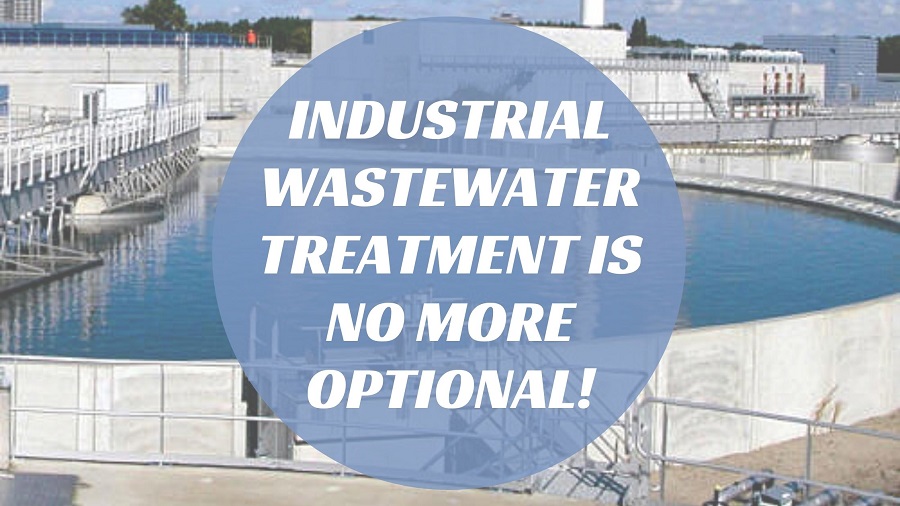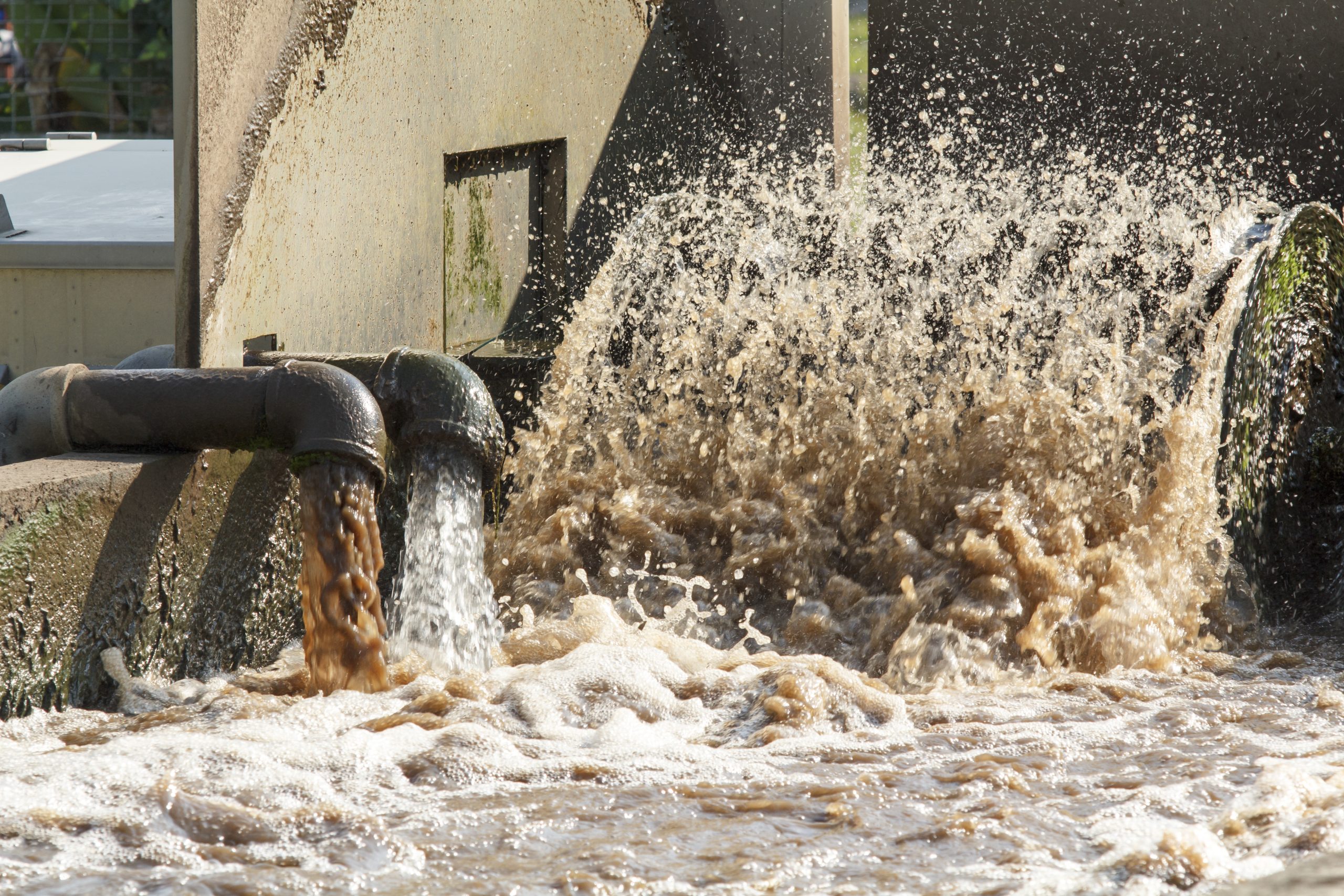Industrial Waste Water Treatment-- Efficient Waste Monitoring for Manufacturing Facilities
Wiki Article
Developments and Breakthroughs in Hazardous Waste Water Treatment Technologies
The landscape of commercial wastewater treatment is undertaking a transformative shift, driven by technologies that enhance both performance and sustainability. Emerging modern technologies, such as membrane bioreactors and microbial gas cells, are redefining contaminant elimination procedures while contributing to power generation. Resource healing approaches are acquiring grip, aligning with circular economic situation concepts. As regulative criteria evolve, the combination of AI and artificial intelligence into wastewater monitoring systems assures to guarantee and enhance procedures conformity. The full effects of these innovations elevate crucial questions regarding their scalability and long-lasting effect on market techniques.Overview of Waste Water Therapy Technologies
Wastewater therapy modern technologies include a series of techniques developed to remove impurities from commercial effluents before their release right into the atmosphere. These innovations are vital for maintaining ecological equilibrium and making sure compliance with ecological guidelines. The main categories of wastewater therapy include physical, chemical, and biological approaches, each serving distinct objectives based on the nature of the impurities existing.

Biological treatment techniques utilize microbes to degrade organic matter, making them especially reliable for organic-rich effluents. Strategies like triggered sludge and biofilm activators harness the all-natural destruction capacities of bacteria, resulting in considerable reductions in biochemical oxygen demand (BODY)
Advanced Purification Strategies
Advanced purification strategies stand for a critical evolution in the realm of industrial wastewater treatment, enhancing the efficiency of contaminant removal processes. Industrial Waste Water Treatment. These methods encompass a range of technologies, including microfiltration, ultrafiltration, nanofiltration, and reverse osmosis, which provide consecutive obstacles for numerous bit dimensions and chemical structuresMicrofiltration and ultrafiltration use membrane systems to remove put on hold solids, microorganisms, and bigger organic molecules, improving the quality of effluent before more therapy. Nanofiltration connects the gap in between ultrafiltration and turn around osmosis, successfully eliminating divalent ions and organic compounds, therefore decreasing the load on downstream procedures.
Reverse osmosis uses the greatest level of filtration by enabling only water and tiny particles to pass with its semi-permeable membranes, making it excellent for redeeming top notch water from industrial effluents. Current improvements in membrane technology, consisting of the development of even more long lasting and fouling-resistant products, have significantly boosted operational performance and decreased costs.
Integrating these advanced purification techniques not just enhances the total treatment procedure but likewise contributes to sustainability initiatives by enabling water reuse and resource recuperation in commercial settings. (Industrial Waste Water Treatment)
Biological Treatment Developments

Additionally, the growth of crafted biological systems, such as membrane bioreactors (MBRs), incorporates organic treatment with innovative membrane layer filtration. This integration enables greater effluent quality and decreased footprint, making it appropriate for space-constrained industrial facilities. Technologies in genetically crafted microbes have actually likewise emerged, boosting the biodegradation of particular impurities, such as drugs and heavy steels, that are generally testing to eliminate.
In addition, the execution of bioaugmentation techniques, where valuable germs are presented to improve the existing organic therapy procedures, has actually revealed encouraging outcomes in boosting therapy efficiency. These advancements collectively indicate a fad in the direction of even more lasting and efficient organic therapy techniques that can adapt to the developing intricacies of industrial wastewater streams. As markets continue to prioritize environmental conformity, these organic innovations will certainly play a critical function in wastewater administration.

Source Recovery Approaches
In commercial settings, the assimilation of resource recovery techniques has actually come to be progressively vital for improving sustainability and reducing waste. These techniques concentrate on extracting beneficial products and energy from wastewater streams, thereby transforming prospective toxins right into reusable sources.One famous technique is vitamins and mineral recuperation, where nitrogen and phosphorus, typically present over in wastewater, are recorded and exchanged plant foods. This not just minimizes ecological influences yet additionally gives a circular economic climate option for farming applications. Furthermore, modern technologies such as anaerobic digestion enable the conversion of organic waste right into biogas, a renewable resource source that can counter nonrenewable fuel source use in industrial operations.
Furthermore, progressed purification and membrane layer modern technologies facilitate the recuperation of industrial spin-offs such as steels and salts. These recouped products can be rehabilitated right into manufacturing processes, reducing the demand for virgin resources.
Future Fads in Drainage Administration
As sectors significantly prioritize sustainability, the Get More Information future of wastewater management is readied to go through significant changes. Technological improvements, such as man-made intelligence and equipment discovering, will allow extra reliable tracking and monitoring of wastewater systems. These technologies can predict maintenance demands, maximize treatment procedures, and boost decision-making, eventually reducing functional expenses and environmental effect.Furthermore, the combination of circular economic climate principles will play an important function in wastewater administration. Industries are anticipated to change towards systems that not just treat wastewater yet likewise recover important sources, such as nutrients, water, and power. This shift will minimize waste and promote the reuse of products, straightening with international sustainability goals.
Emerging treatment strategies, such as membrane bioreactors and advanced oxidation procedures, will additionally improve the efficiency of wastewater therapy, enabling higher quality effluents appropriate for reuse. In addition, governing structures are likely to progress, stressing more stringent requirements for wastewater discharge and encouraging sectors to embrace ingenious treatment remedies.
Conclusion
In verdict, the advancement of industrial wastewater therapy innovations shows a significant shift in the direction of enhanced performance and sustainability. Developments in sophisticated purification strategies, organic therapies, and source recuperation techniques highlight the sector's dedication to environmental stewardship. The assimilation of expert system and device knowing better enhances these procedures, making sure governing conformity and advertising a round economic situation. Proceeded innovations in these areas will play an important function fit the future of wastewater management and safeguarding important water resources.The landscape of commercial wastewater treatment is going through a transformative change, driven by technologies that improve both efficiency and sustainability.Wastewater therapy modern technologies include a variety of techniques designed to eliminate impurities from commercial effluents before their launch right into the setting.Taking advantage of the power of organic procedures has led to considerable technologies in the therapy of industrial wastewater.Additionally, the application of bioaugmentation approaches, where advantageous microorganisms are introduced to boost the existing organic therapy procedures, has revealed appealing outcomes in improving therapy performance. These developments jointly represent a trend in the direction of more sustainable and reliable organic treatment methods that can adapt to top article the advancing intricacies of commercial wastewater streams.
Report this wiki page